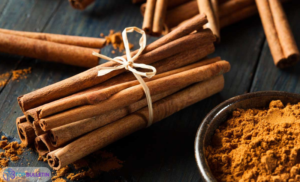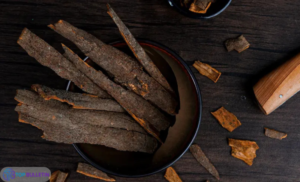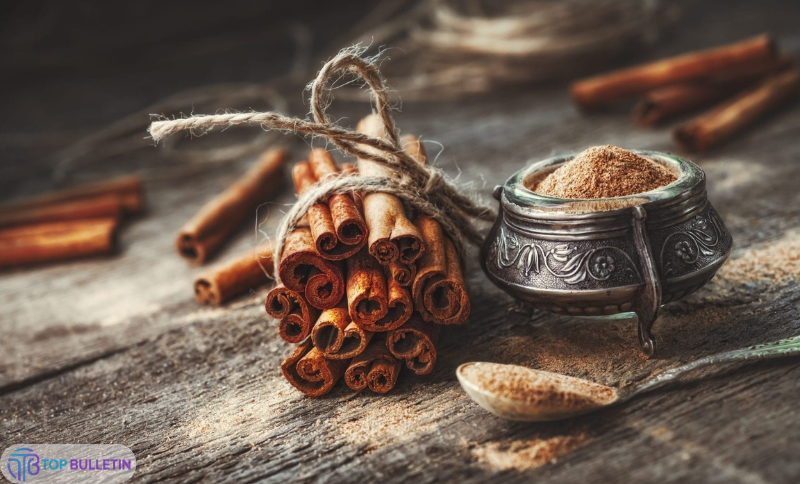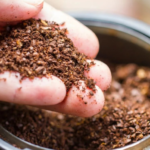Without a doubt, cinnamon sticks are one of the most beloved spices in kitchens around the world. Whether you’re crafting a cup of spiced tea, infusing a cozy stew, or trying out a festive dessert, cinnamon_ sticks bring a warm, comforting flavor that’s instantly recognizable. As it turns out, cinnamon sticks offer far more than just taste — they hold cultural significance, health benefits, and culinary versatility.
Because of their wide range of uses and natural appeal, people everywhere are looking for organic cinnamon_sticks, Ceylon cinnamon_sticks, or even wondering, “Can you eat cinnamon_ sticks?” In this guide, we’ll explore all of that and more.
What Are Cinnamon Sticks?

To put it simply, cinnamon_sticks are the dried inner bark of cinnamon trees. After being harvested, the bark curls naturally into the stick-like shape we all recognize. These sticks are often used whole in cooking or crushed to make ground cinnamon.
There are two main types of cinnamon_sticks:
-
Ceylon Cinnamon_Sticks (True Cinnamon): Delicate, subtly sweet, and easy to break.
-
Cassia Cinnamon_Sticks: Thicker, stronger in flavor, and more common in grocery stores.
Because of their smoother taste and lower coumarin content, Ceylon cinnamon sticks are often preferred for both culinary and health purposes.
How to Use Cinnamon Sticks
There are endless ways to use cinnamon_sticks in your kitchen, home, or even health routine. Here are just a few ideas:
1. In Beverages:
-
Add a stick to hot tea or coffee for a spicy infusion.
-
Boil with water and lemon for a detoxifying morning drink.
-
Infuse mulled wine or cider for the holidays.
2. In Cooking:
-
Toss into curries, soups, or stews for warmth and depth.
-
Simmer in rice or quinoa for subtle flavor.
-
Use in desserts like rice pudding, apple pie, or cinnamon buns.
3. For Aromatherapy:
-
Simmer with citrus peels and cloves as a natural home fragrance.
-
Add to DIY potpourri or holiday centerpieces.
Organic vs. Non-Organic Cinnamon Sticks
When it comes to health-conscious consumers, organic cinnamon_sticks are a top choice. These sticks are grown without synthetic pesticides or fertilizers, making them a cleaner, safer option.
Moreover, because organic farming practices emphasize sustainability, buying organic cinnamon_ sticks is also a great way to support environmentally friendly agriculture.
That said, conventional cinnamon_sticks are still safe for most people — just be sure to buy from reputable sources to avoid additives or contamination.
Ceylon Cinnamon Sticks vs. Cassia: What’s the Difference?
While both types are considered cinnamon, they differ significantly in taste, appearance, and health impact.
| Feature | Ceylon Cinnamon Sticks | Cassia Cinnamon Sticks |
|---|---|---|
| Taste | Mild, sweet, delicate | Strong, spicy, bold |
| Texture | Thin layers, breaks easily | Thick and tough |
| Color | Light tan | Reddish-brown |
| Coumarin Content | Very low | High (can be harmful in excess) |
| Cost | More expensive | More affordable |
Because of these differences, many health experts recommend Ceylon cinnamon_sticks for daily use — especially when consumed in tea or supplements.
Can You Eat Cinnamon Sticks?
Technically, yes — but it’s not recommended to chew or swallow whole cinnamon_sticks. They’re woody, fibrous, and tough to digest. Instead, you can simmer them in liquids or grind them into powder if you plan to ingest them.
Alternatively, if you’re asking “can you eat cinnamon_sticks” because you’re looking for health benefits, it’s much safer to drink a cinnamon-infused beverage or sprinkle ground cinnamon onto your food.
Do Cinnamon Sticks Go Bad?
Yes, like most spices, cinnamon_sticks can go bad — or at least lose their flavor over time. However, when stored properly, they can last up to 3–4 years.
Tips for Storage:
-
Store in a cool, dry place away from sunlight.
-
Use airtight glass containers for freshness.
-
Keep away from heat sources like stoves or ovens.
To test freshness, break a stick — if it’s brittle and releases a strong aroma, it’s still good. On the other hand, a soft, dull-smelling stick means it’s time for a replacement.
Where to Buy Cinnamon Sticks Near Me
In most cases, you’ll find cinnamon_sticks near me at:
-
Local grocery stores (look in the spice aisle)
-
Health food stores
-
Indian, Middle Eastern, or Asian markets
-
Bulk stores like Costco or Sam’s Club
However, online stores offer the best selection, especially for specialty types like Ceylon cinnamon_ sticks or organic cinnamon sticks. Some top places to shop online include:
-
Amazon
-
Mountain Rose Herbs
-
Frontier Co-op
-
Walmart
When buying online, always check reviews and origin info — especially if you’re buying in bulk.
Buying Bulk Cinnamon Sticks: Pros and Cons

If you’re an avid cinnamon user, it may be tempting to buy bulk cinnamon_sticks. Let’s look at the advantages and possible drawbacks.
Pros:
-
Saves money over time
-
Perfect for holiday cooking or gifting
-
Fewer trips to the store
Cons:
-
Shorter shelf life if not stored properly
-
Risk of buying low-quality or stale batches
Therefore, only buy bulk when you have proper storage and plan to use them regularly.
Cinnamon Sticks at Pizza Hut: A Sweet Twist
Interestingly enough, Pizza Hut cinnamon_sticks aren’t actually made from the whole spice. Instead, they’re a dessert breadstick flavored with cinnamon sugar and served with icing.
Despite the name, they don’t contain actual cinnamon_sticks, but they’re definitely a fan favorite! So, if you search “cinnamon_sticks Pizza Hut,” you’re likely craving that sugary, doughy goodness.
Health Benefits of Cinnamon Sticks
When used regularly (and in moderation), cinnamon_sticks may offer several health perks:
-
🩺 Supports healthy blood sugar levels
-
❤️ Promotes heart health
-
🧠 May support cognitive function
-
🌿 Anti-inflammatory and antioxidant effects
That being said, be cautious about overconsumption — especially with Cassia cinnamon_sticks, which contain higher levels of coumarin. Always consult a doctor if using cinnamon therapeutically.
Author Bio Table
| Name | Maya Clarkson |
|---|---|
| Expertise | Culinary Writer, Holistic Food Enthusiast |
| Experience | 10+ years in natural cooking and food journalism |
| Favorite Spice | Ceylon Cinnamon |
| Location | Asheville, NC |
| @spice_and_story |
Final Thoughts
To sum it up, cinnamon_sticks are more than just a pantry staple — they’re a flavorful, aromatic, and health-supportive spice that belongs in every kitchen. Whether you’re steeping Ceylon cinnamon_ sticks in a cozy chai or decorating your home with fragrant potpourri, the possibilities are endless.
Because they’re available in various forms — including organic cinnamon_sticks, bulk cinnamon_ sticks, and even dessert variations like Pizza Hut cinnamon_sticks — it’s incredibly easy to incorporate them into your daily life.
In addition, understanding the differences between Ceylon and Cassia, knowing how to store them, and learning how to use them properly helps you get the most out of every stick.
With all things considered, if you’re someone who appreciates bold flavors, soothing aromas, or even just warm comfort food, then cinnamon_sticks absolutely deserve a spot on your shelf.
So, the next time you’re at the store or browsing online, go ahead and grab a bundle — your kitchen (and taste buds) will thank you.
FAQs
1. Can you eat cinnamon sticks directly?
Technically yes, but realistically, it’s not recommended. Instead, use them to infuse liquids or grind them into powder before consuming.
2. Do cinnamon sticks go bad over time?
Yes, they can. However, when stored properly in an airtight container, they can stay fresh for up to 4 years.
3. What’s the difference between Ceylon and Cassia cinnamon_sticks?
While both are cinnamon, Ceylon is considered “true cinnamon” and is milder, whereas Cassia is more common and has a stronger flavor.
4. Where can I buy cinnamon sticks near me?
Generally, you can find them in most grocery stores. Nevertheless, specialty stores and online retailers often offer better quality and variety.
5. Are organic cinnamon sticks better than non-organic ones?
Yes, especially if you’re consuming them often. As a result, organic options are often safer and more eco-friendly.






